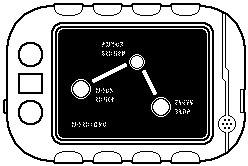Technology level 6
Technology level 6 is the seventh of the Technology level classifications. The defining characteristic of a society reaching TL–6 is the use of nuclear fission as an energy source and weapon system. Combined with advances in rocketry this gives a society, for the first time, the ability to fundamentally alter their own world.
It also includes the development and adoption of digital electronic devices. The vacuum tube devices quickly give way to transistors and integrated circuits for digital computing systems, leading to huge advances in data collection, analysis, and the insights this may bring.
In terms of classification TL–6 is the Technological Period of Ur-Tech, the initial planetary bound cycle of development. It also occurs within the Technological Epoch know as the Division of Labor Epoch.
Theoretical Technologies[edit]
- Physical Science
- Theory of Electronics
- Material Science / Manufacturing
- Fiberglass - Consistent manufacturing of lightweight composite materials.
- Plastics - Refined manufacture of raw materials.
- Titanium - Manufacturing with rarer and more exotic metals.
- Biological Science
- Hybrid crops - Deliberate cross breeding to produce resistance to pests, drought, and increase yields
- Cultural Science
- Global nation states
Quality of Life Technologies[edit]
- Energy
- Nuclear Fission
- Gas turbine engines
- Photovoltaic cells
- Information
- Electronic Computers
- Communications
- Television - Video transmission and recordings
- High speed press - Increased availability of printed material and mass marketing.
- Medicine / Life sciences
- Reconstructive Surgery
- Organ Transplants
- Environment
- Weather prediction and forecasting
- Underground cities
Transportation Technologies[edit]
- Land transportation
- Amphibian Vehicles
- Water
- Amphibian Vehicles
- Long term submersibles
- Air
- Early jet aircraft
- Helicopters
- Space
- Orbit capable rockets - Capable of reaching anywhere on a planet or manned missions to planetary moons.
Military Technologies[edit]
Weapon developments are mainly improvements in materials, with the addition of rudimentary electronics to large weapons, including gyrostablized fire control systems and very basic targeting computers.
Warfare continues along TL–5 lines, with new tactics involving deployment, use and defenses against atomic weapons among those cultures that develop them. Marginally effective body armor vs. high velocity fragments and small bullets becomes available, but is not in widespread use.
Propulsion technology allows for reaction engine missiles with intercontinental range and atomic warheads. It is conceivable that a starship without either point defense or nuclear dampers could be targeted by ground launched weapons at this tech level, but no instances of this have been recorded. Civilian and many personal weapon technology are more or less the same as TL–5 weapons. Personal night-vision devices of some effectiveness are available, but often a "secret" military technology.
See Also[edit]
Technology levels[edit]
- Technological Systemics
- Foundational Period
- Interstellar Period
- Galactic Period / Accelerating Tech Level
References & Contributors[edit]
- Marc Miller. Worlds and Adventures (Game Designers Workshop, 1977), 7-8, 14-15,17.
- Marc Miller. Scouts (Game Designers Workshop, 1983), 26.
- Marc Miller. Merchant Prince (Game Designers Workshop, 1985), 34,37.
- Herb Petro. "Tech Level Expansion." Imperium Staple 07 (1986): 3.
- Loren Wiseman. "Twisting Tech Levels: A Traveller Variant." Challenge 31 (1987): 27.
- Marc Miller. Referee's Companion (Game Designers Workshop, 1988), 26-34.
- Geir Lanesskog. World Builder's Handbook (Mongoose Publishing, 2023), 58,83-86.Joe Fugate, J. Andrew Keith, Gary L. Thomas. World Builder's Handbook (Digest Group Publications, 1989), 58,83-86.
- Frank Chadwick, Dave Nilsen. Fire, Fusion, & Steel (Game Designers Workshop, 1994), 6-8,37.
- Greg Porter. Emperor's Arsenal (Imperium Games, 1997), .
- David Burden. Pocket Empires (Imperium Games, 1997), 51-52,108.
- Leighton Piper. "Low Tech." Signal-GK 13 (1997): 30-31.
- Jon F. Zeigler. First In (Steve Jackson Games, 1999), 94-95, 108-117.7
- K. David Ladage, "Alternate Technological Paths", JTAS Online (2001)
- K. David Ladage, "Alternate Technologies II: Relativity", JTAS Online (2001)
- Martin Dougherty, Hunter Gordon. The Traveller's Handbook (QuikLink Interactive, 2002), 378.
- Jeff Zeitlin. "An Analysis of Tech Levels." Freelance Traveller 012 (2010): 10-12.
- Marc Miller. T5 Core Rules (Far Future Enterprises, 2013), 502-507.
- Marc Miller, Robert Eaglestone, Don McKinney. Starships (Far Future Enterprises, 2019), 223-237.
- Marc Miller, Robert Eaglestone, Don McKinney. Worlds and Adventures (Far Future Enterprises, 2019), 19.
